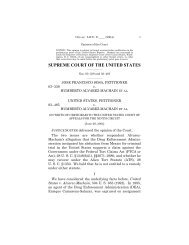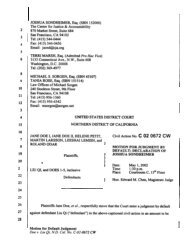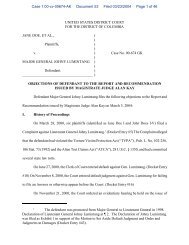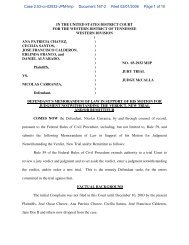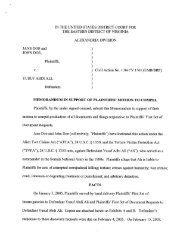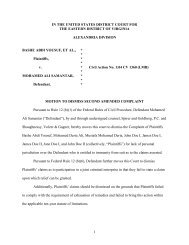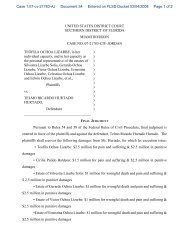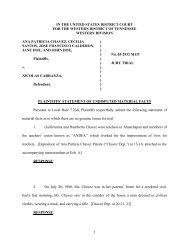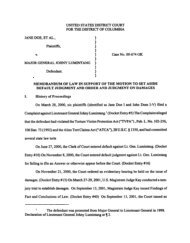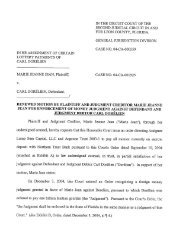Petitioner, v. Respondents. - Center for Justice and Accountability
Petitioner, v. Respondents. - Center for Justice and Accountability
Petitioner, v. Respondents. - Center for Justice and Accountability
You also want an ePaper? Increase the reach of your titles
YUMPU automatically turns print PDFs into web optimized ePapers that Google loves.
17This Court has long presumed prospective application ofstatutes that, like this one, affect substantive rights. See Lindh,521 U.S. at 327-28; L<strong>and</strong>graf, 511 U.S. at 280; Hadix, 527 U.S. at352. In addition, when Congress attempts to deprive courtsof habeas jurisdiction, this Court has repeatedly relied onthe strong presumption in favor of judicial review ofadministrative action <strong>and</strong> the longst<strong>and</strong>ing rulerequiring a clear statement of congressional intent torepeal habeas jurisdiction. Implications fromstatutory text or legislative history are not sufficientto repeal habeas jurisdiction; instead, Congress mustarticulate specific <strong>and</strong> unambiguous statutorydirectives to effect a repeal.In this case, the plain statement rule drawsadditional rein<strong>for</strong>cement from other canons ofstatutory construction. First, as a general matter,when a particular interpretation of a statute invokesthe outer limits of Congress’ power, we expect aclear indication that Congress intended that result.Second, if an otherwise acceptable construction of astatute would raise serious constitutional problems,<strong>and</strong> where an alternative interpretation of the statuteis “fairly possible,” we are obligated to construe thestatute to avoid such problems.St. Cyr, 533 U.S. at 299-300 (citations <strong>and</strong> footnotes omitted).See also infra pp. 31-39. 14 This default rule has particularcorpus aside, I’d hesitate to say that Congress couldn’t effect anunconstitutional withdrawal of jurisdiction—that is, a withdrawal toeffectuate unconstitutional purposes—if it really wanted to. But the Courtshould use every possible resource of construction to avoid the conclusionthat it did want to.” Id. at 1398-99. <strong>Respondents</strong>’ motion violates every oneof Professor Hart’s fundamental precepts, from his view that limitationson jurisdiction should be narrowly construed when defendants invoke itto block a criminal action, id. at 1371-72, 1375, 1386-87; to his claim thatadvance challenges to the structure of a body should be entertained whenthey would avoid an en<strong>for</strong>cement proceeding altogether, id. at 1374.14 The statutes in place have governed Hamdan’s conduct in an extremeway unlike Bruner’s <strong>and</strong> Hallowell’s monetary contexts. Over two yearsago, Hamdan was given military counsel <strong>for</strong> the limited purpose ofnegotiating a plea. By refusing to enter a plea <strong>and</strong> deciding to contest thecommission system, Hamdan has now waited—well over two years—<strong>for</strong>this Court to hear his case, with the threat of a trial looming over his head.Had the government’s interpretation of the DTA been the law in late 2003,




